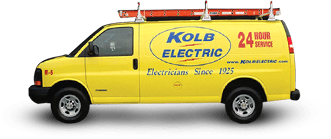Having an overloaded circuit can cause a world of problems. Without immediate attention, it can also become a fire hazard, resulting in extensive and costly repairs. Circuits often get overloaded when too much electricity is forced to run through them. The cause is frequently having too many extension cords plugged into one outlet or too many appliances running off the same circuit. There are a few things you can do to troubleshoot the problem.
Turn Everything Off
To identify the problem, you’ll need to turn everything off. The circuit will have nothing to draw from with everything turned off, leaving it dormant.
Check You Circuit Panel
Find your circuit panel and look for any tripped breakers. Try to reset the breaker. You may have a short in your circuit panel if it doesn’t reset. Call an electrician to look over your system and make the necessary repairs.
Test Your Wall Switches
Turn on each wall switch one at a time. If the light turns on and doesn’t trip the breaker, turn it off and move to the next one. Move through your entire home and check all of the switches individually.
Test Your Appliances
The next step is to turn on each appliance one at a time. Turn each one back off before you move to the next one. The key is to watch as you turn your appliances back on. It may be that two devices on the same circuit are causing the problem. One by itself isn’t usually a problem unless there is a short somewhere along the line.
Turn Everything Back On
Go through your house and begin to turn things back on. Check your circuit panel after turning each item on. If there’s an overload, it should trip a breaker as you begin to add more items to the circuit.
Preventing an Overloaded Circuit
Avoid using extension cords whenever possible. It’s also a good idea to map your circuits as they go through your house. Don’t overuse plug-ins that run on the same circuit path. It may mean that you have to move items to different areas to keep one circuit path from being overloaded. It’s also good practice to keep the number of things plugged into a wall outlet around two. That doesn’t mean two extension cords or surge protectors. They can easily overload a circuit.
When To Call an Electrician
Anytime you experience a problem with your circuit panel and can’t troubleshoot the problem with the above steps, you need to call an electrician. An overloaded circuit or short in your electrical system is a fire hazard. Don’t take chances with your family’s safety!
Sometimes you need professionals to fix things for you. If you live in Maryland, Virginia, or the DC area, contact Kolb Electric online or call us at 877-287-1179 today.









